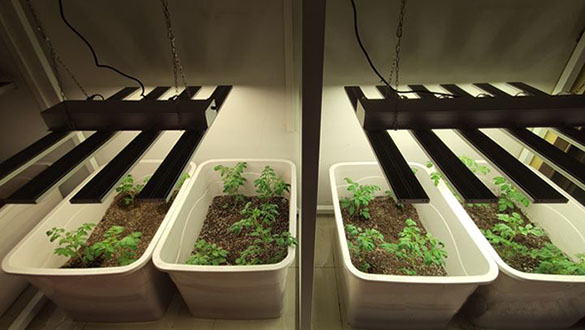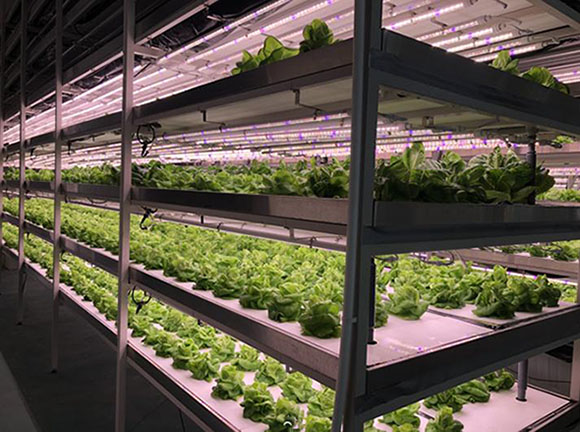The grow light is an artificial light source, usually an electric light source, designed to stimulate plant growth by emitting an electromagnetic spectrum suitable for photosynthesis. Plant grow lights are used in applications that do not have natural light or require supplementary light. For example: In winter, when daylight hours may not be enough to achieve the desired plant growth, grow lights are used to extend the time the plants receive light. If the plants do not get enough light, they will spindly grow.

Grow light is similar to the spectrum of the sun, simulating outdoor conditions from the different colors, temperature and spectral output of the growing light, and changing the lumen output of the light. Depending on the type of plant being cultivated, the cultivation stage (germination/vegetative period or flowering/fruiting period) and the photo-period required by the plant, the specific range of the spectrum, the luminous efficiency and the color temperature are all desirable.
Working Principle:
The LED plant grow light is a kind of plant light. It uses light-emitting diodes as the light source and replaces sunlight with light to create an environment for plant growth and development in accordance with the law of theirs growth. Full spectrum LED grow lights help shorten the growth cycle of plants. The light source is mainly composed of red and blue, using the most sensitive light band of plants. Red wavelengths use 630nm and 640-660nm, and blue wavelengths use 450-460nm and 460-470nm. These light sources can make plants produce the best photosynthesis, so that the plants get the best growth condition. Light environment is one of the important physical environmental factors that are indispensable for plant growth and development. Controlling plant morphology through light quality regulation is an important technology in the field of facility cultivation.
The Necessity of Greenhouse Light:
On cloudy days and low light intensity, artificial lighting is a must. At least 8 hours per day should be given to the crops at night, and the time of day light should be fixed. However, the lack of night rest time can also cause plant growth disorder and reduce production. For tomatoes, the most effective light time is from dusk to midnight (16:00-24:00) or midnight to early morning (24:00-8:00). So light for 8 hours and rest for 8 hours. In practice, we should provide light to the plants throughout the growth period, that is, from the seedling to the planting period. In the final period we should reduce the light to 6 hours a day or even stop for 2-3 days.
If it takes a long time to the planting period because of poor light conditions, this usually requires a month of lights. Under fixed environmental conditions such as carbon dioxide, moisture, nutrients, temperature and humidity, “photosynthetic luminous flux density” between the light saturation point and the compensation point of a specific plant directly determines the relative growth speed of the plant. Therefore, an efficient light source PPFD combination is the key to the production efficiency of the plant factory.

Generally, indoor plants and flowers will grow worse and worse over time, mainly because of the lack of light. Irradiation with a supplementary light suitable for the required spectrum of plants can not only promote their growth, but also prolong the flowering period and improve the quality of the flowers. The application of this high-efficiency light source system to agricultural production in greenhouses and other facilities, on the one hand, it can solve the shortcomings of the lack of sunlight that causes the taste of strawberries, tomatoes, cucumbers and other greenhouse vegetables to decrease. On the other hand, winter greenhouse vegetables can be put on the market in advance, so as to achieve the purpose of out of season cultivation.

